Epic Guide to Lyndon B. Johnson National Historical Park in Texas including things to do, guided tours, history, and more.
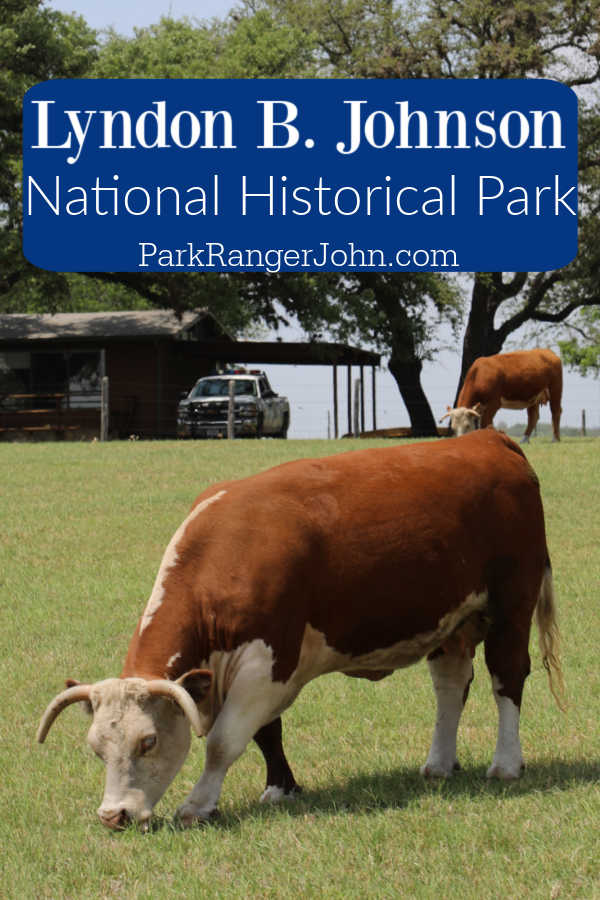
Lyndon B. Johnson National Historical Park
Lyndon B. Johnson National Historical Park is located in south central Texas. A visit to this great park gives you the opportunity to learn more about President Lyndon. B Johnson and his presidency.
About Lyndon B. Johnson National Historical Park
This park has two distinct visitor areas separated by 14 miles.
One site is located in the small town of Johnson City where the visitor center provides info on LBJ and his wife Eleanor.
Near the visitor center is President Johnson's boyhood home where he lived from the age of five through high school. You can also see where other relatives lived near the town.
Near Stonewall, Texas you can visit the LBJ Ranch and learn more about Hereford cattle that are descendants of President Johnson's herd.
One thing to know if you start your visit at the state park and then can head towards the ranch.
At the state park, you can pick up an auto tour pass and visit the visitor center and get your park stamps. It is a short drive from the state park to the ranch.
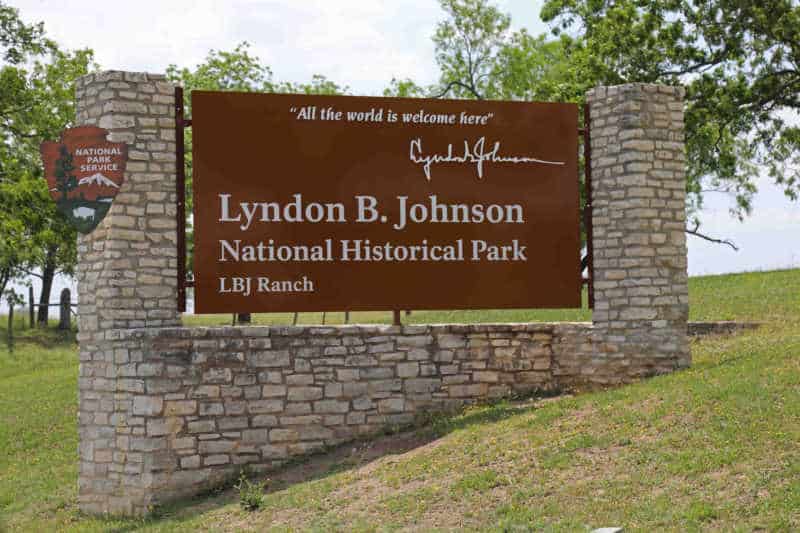
Is Lyndon B. Johnson National Historical Park worth visiting?
We really enjoyed the LBJ Ranch when we visited. It was so much more than what we expected it to be.
We thought it would only take an hour or two but we found ourselves truly enjoying every minute we had at the park.
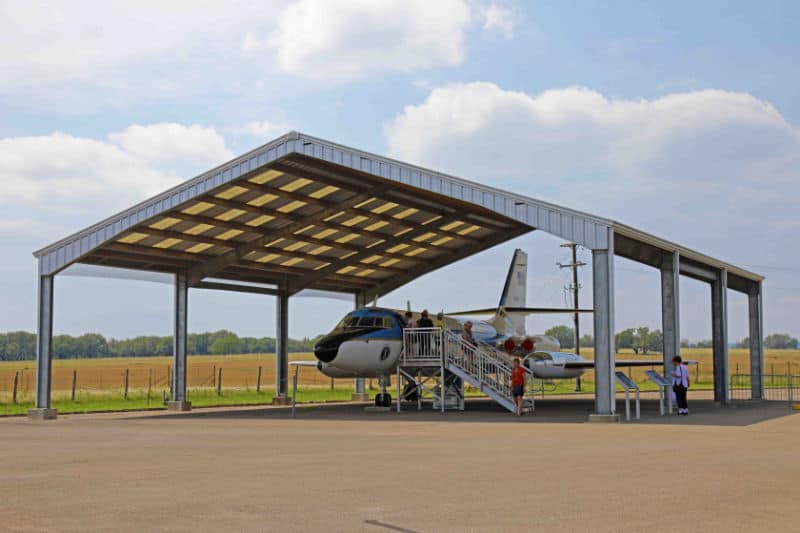
History of Lyndon B. Johnson National Historical Park
Lyndon B. Johnson National Historical Park is located in Stonewall, Texas, about 50 miles west of Austin.
The park includes the sites of the birthplace, home, ranch, and final resting place of President Lyndon B. Johnson.
Lyndon Baines Johnson, or LBJ as he has historically been called, was born in August 1908 in Gillespie County Texas.
Johnson was the oldest of five children born in a three bedroom house in the hills of Texas. Johnson attended what is now Texas State University and had a strong talent for debating.
After graduating college in 1930, Johnson became legislative assistant to the newly elected Democratic congressman Richard Kleberg, moving to Washington D.C. for his new role.
In 1934, Johnson married Claudia Alta Taylor in San Antonio. Claudia’s nickname of “Lady Bird” stuck with her throughout her husband’s career and the rest of her life.
Johnson was appointed as Lieutenant Commander to the U.S. Naval Reserve in 1940. Three days after the attack on Pearl Harbor in 1941, he was called to active duty.
Johnson served in the U.S. Senate from 1949 to 1961, and in 1960 began a late campaign for the presidency. Johnson ultimately lost the presidential race to Kennedy.
After much back and forth between parties, the decision was made and Kennedy offered the position of Vice President to Johnson in July of 1960.
On November 22, 1963, the country was aghast as President John F. Kennedy was assassinated while riding in a motorcade through Dallas, Texas.
Vice President Lyndon B. Johnson was sworn in as the 36th President of the United States on Air Force One just hours after Kennedy’s death.
The most iconic photo ever taken aboard the aircraft shows Mrs. Kennedy and Mrs. Johnson on either side of Johnson as he is sworn in.
Through his presidency, Johnson spearheaded the Great Society – a series of policy initiatives with the goals of ending poverty, crime, and abolishing inequality.
Johnson extended the New Deal started by President Franklin Roosevelt. He worked to aid in many programs that we still use today – such as educational programs like Headstart as well as Medicare and Medicaid.
Johnson finished the term and won reelection in 1964. His legacy lives on through his movements which led to the signing of the Civil Rights Act of 1964, and the Voting Rights Act of 1965.
Both were major steps forward for equality in American history.
The Lyndon B. Johnson Park encompasses nearly 700 acres in the Texas Hill Country.
This area is rich with historical evidence including artifacts left behind by Native Americans who roamed the area over 13,000 years ago.
During the 1800s, German immigrants settled this area, and many of these family homes and structures used for farming can be seen inside the park.
The Danz family built their cabin in the Hill Country, sometime around 1860, which overlooks the fields above the Pedernales River.
The Sauer family came to the area as early as the late 1860s and built cabins and stone buildings to house their large family of 8 children. One of those children became a midwife who was present at the birth of President Johnson.
Three locations included in the park are the one room schoolhouse where Johnson attended his first year of school, Johnson’s boyhood home, and the “Texas White House.”
This was the first time a U.S. President created a functioning White House away from Washington D.C.
The one room schoolhouse, Junction School, was built in rural Gillespie County in 1910.
When Lyndon B. Johnson first attended this school is was made up of children in grades Preschool through 8th grade. Being only 4 years old, Johnson was the youngest student and often completed his reading lessons while sitting in his teacher’s lap.
Johnson’s family moved into his three bedroom boyhood home in 1913 when he was five years old. Johnson lived here until he graduated high school in 1924. The tours today showcase 1920s period furnishings inside the house.
The original structure of the Texas White House was built in 1894 out of native limestone by a German immigrant named William Meier.
In 1909, the President’s aunt and uncle bought the home and lived there until the President’s widowed aunt sold the home to the President and his wife in 1951.
As a child, Johnson knew this home as “the big house on the river” and always admired the home and its location.
Johnson spoke of fond memories of spending Christmases at the home and spending summers helping his uncle take care of cattle on the adjacent ranch.
When the Johnsons bought the home and land it was aptly named the “LBJ Ranch.”
President Johnson built a hangar behind the home so he could fly to Washington when necessary and officials from Washington could fly to the Texas White House.
Air Force One was too large to land on the LBJ Ranch hangar, but smaller planes would transport officials from either San Antonio or Austin to the ranch. Johnson loved having meetings outside when possible from early spring until cold winter weather pushed them inside.
Johnson admitted he was more confident in working deals and making decisions when he was on his “home turf.”
Not far from the location where Johnson was born is the Johnson Family Cemetery.
Johnson’s great grandmother, Priscilla Bunton was the first person buried in the cemetery, having died in 1905.
Due to a flood, her family was not able to cross the river to bury her next to her husband in the Stonewall Community Cemetery so they chose that site under a grove of oak trees for her burial. Johnson said he visited the cemetery every night while he was in Texas as it was such a peaceful spot.
Lyndon B. Johnson passed away from a heart attack in 1973 at the age of 64.
Johnson’s funeral at the LBJ Ranch took place on January 25, 1973 and was conducted by the Reverend Billy Graham.
Lady Bird Johnson lived 34 years past her husband and was laid to rest beside him in 2007.
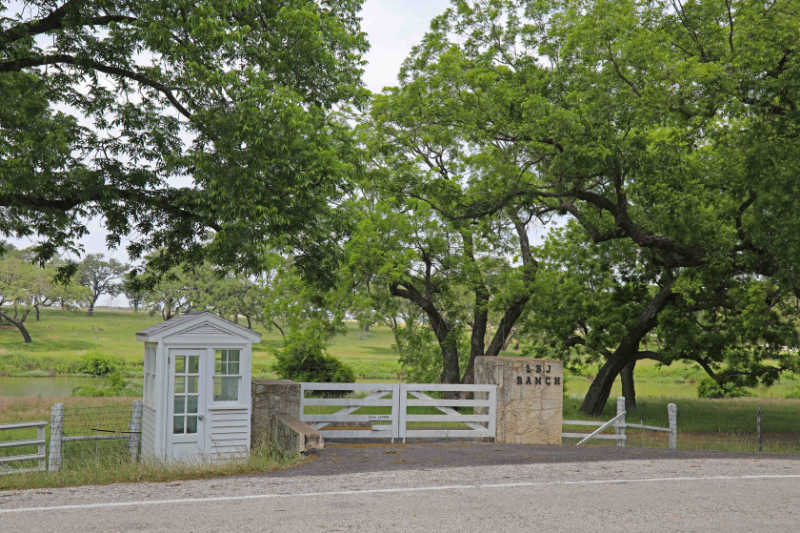
Things to know before your visit to Lyndon B. Johnson National Historical Park
Entrance fee
$0.00 - There is no entrance fee to visit the park.
Learn more about National Park Passes for parks that have an entrance fee.
$80.00 - For the America the Beautiful/National Park Pass. The pass covers entrance fees to all US National Park Sites and over 2,000 Federal Recreation Fee Sites for an entire year and covers everyone in the car for per-vehicle sites and up to 4 adults for per-person sites.

Buy your pass at this link, and REI will donate 10% of pass proceeds to the National Forest Foundation, National Park Foundation, and the U.S. Endowment for Forestry & Communities.
National Park Free Entrance Days -Mark your calendars with the five free entrance days the National Park Service offers annually.
Time Zone
Central Time Zone
Pets
Pets are allowed but must be on a leash less than 6 feet in length.
Cell Service
Cell service will depend on your service provider.
Park Hours
Johnson City District - 9 am to 5 pm
LBJ Ranch - 9 am to 5:30 pm
Wi-Fi
Public WiFi Johnson City District: The Johnson City Chamber of Commerce maintains a visitor information center in the historic Withers & Spauldings building at 100 East Main Street. They offer free wifi.
Ranch District: Lyndon B. Johnson State Park and Historic Site, the starting point for LBJ Ranch tours, has public wifi in its visitor center.
Insect Repellent
Insect repellent is always a great idea when outdoors, especially if you are around any body of water.
We use Permethrin Spray on our clothes before our park trips.
Water Bottle
Make sure to bring your own water bottle and plenty of water with you. Plastic water bottles are not sold in the park.
Parking
There is easy parking at each area of the park.
Food/Restaurants
There are no restaurants within the park.
Gas
There are no gas stations within the park.
Drones
Drones are not permitted within National Park Sites.
National Park Passport Stamps
National Park Passport stamps can be found in the visitor center.
Lyndon B Johnson NHP is part of the 1994 Passport Stamp Set.
We like to use these circle stickers for park stamps so we don't have to bring our passport book with us on every trip.
The National Park Passport Book program is a great way to document all of the parks you have visitied.
You can get Passport Stickers and Annual Stamp Sets to help enhance your Passport Book.
Electric Vehicle Charging
There are at least 5 EV charging stations near Johnson City, Texas.
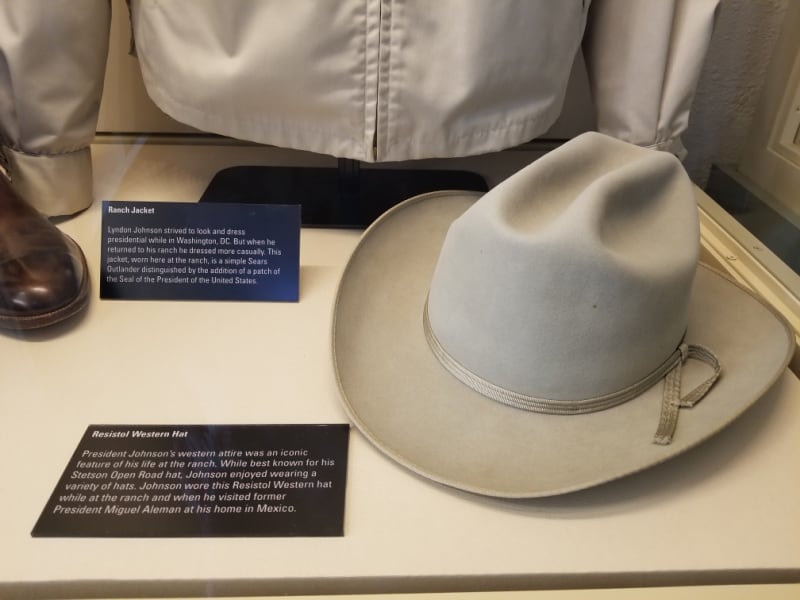
Details about Lyndon B. Johnson National Historical Park
Size - 1,571 acres
Check out how the park compares to other National Parks by Size.
Date Established
December 2, 1969 - established as a National Historic Site
December 28, 1980 - Redesignated as a National Historical Park
Visitation
In 2021, Lyndon B Johnson NHP had 133,914 park visitors.
In 2020, Lyndon B Johnson NHP had 75,322 park visitors.
In 2019, Lyndon B Johnson NHP had 111,972 park visitors.
Learn more about the most visited and least visited National Parks in the US
National Park Address
100 Ladybird Lane
Johnson City, TX 78636
National Park Map
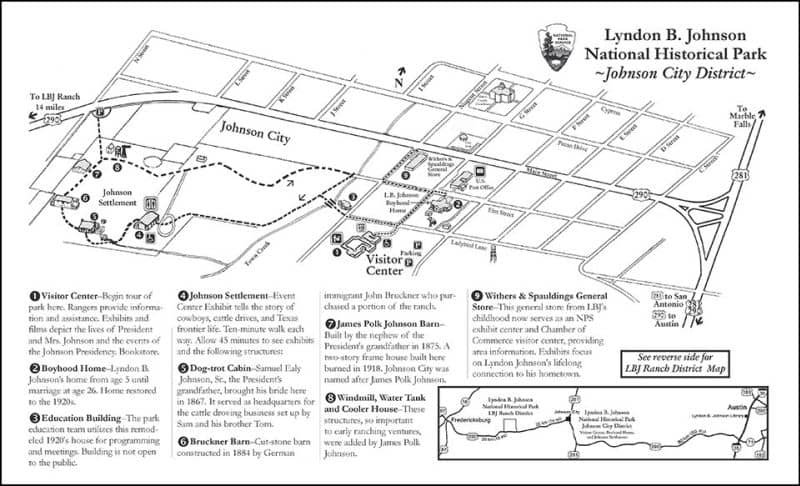

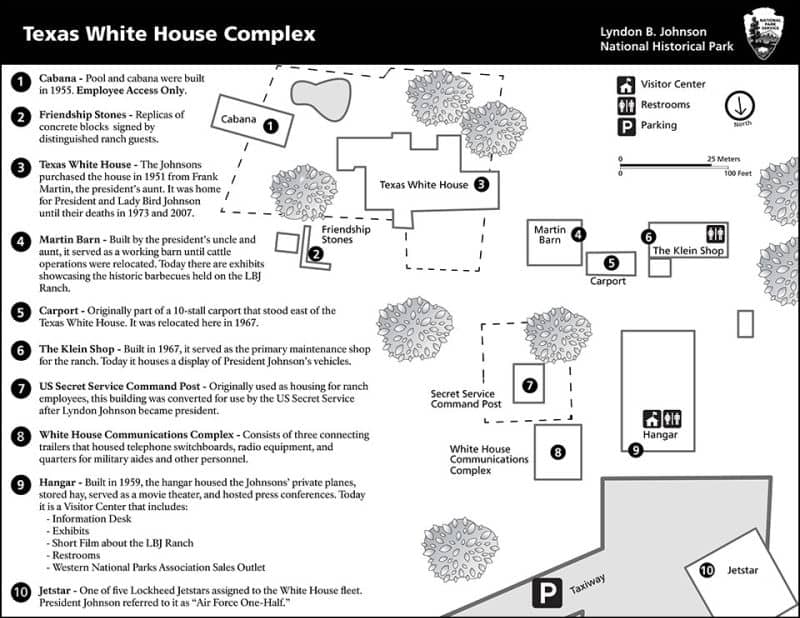
Where is Lyndon B. Johnson National Historical Park?
Lyndon B Johnson NHP is located in the Texas Hill Country near Fredericksburg, Texas.
Estimated distance from major cities nearby
- Johnson City - 14 miles
- Fredericksburg, TX - 16 miles
- San Antonio, TX - 75 miles
- Austin, TX - 60 miles
- Corpus Christi, TX - 210 miles
- Fort Worth, TX - 217 miles
- Dallas, TX - 244 miles
- Houston, TX - 220 miles
Estimated Distance from nearby National Park
Big Bend National Park - 414 miles
Carlsbad Caverns National Park - 421 miles
Guadalupe Mountains National Park - 426 miles
White Sands National Park - 612 miles
Great Sand Dunes National park - 797 miles
Black Canyon of the Gunnison National Park - 957 miles
Mammoth Cave National Park - 999 miles
Where is the National Park Visitor Center?
There are a couple of visitor centers within the park including the Lyndon B. Johnson State Park and Historic Site Visitor Center.
Visitor Center and Park Headquarters
Location - Intersection of Ladybird Lane and Avenue G in Johnson City, TX
This visitor center has two park films, maps of both areas are available, along with Park Rangers available to answer questions.
There is a permanent exhibit that showcases Lyndon Johnson's life and accomplishment.
Hanger Visitor Center
Location - LBJ Ranch
This visitor center is the information center for the LBJ Ranch District. There are number exhibits and a 14 minute film.
Lyndon B Johnson State Park and Historic Site Visitor Center
Location - on Highway 290 approximately 14 miles west of Johnson City and 16 miles east of Fredericksburg.
199 State Park Road 52, Stonewall, TX 78671
This visitor center for the state park also provides free driving permits for the LBJ Ranch.
There is a 26 minute film, a gift shop, and information available about the park.
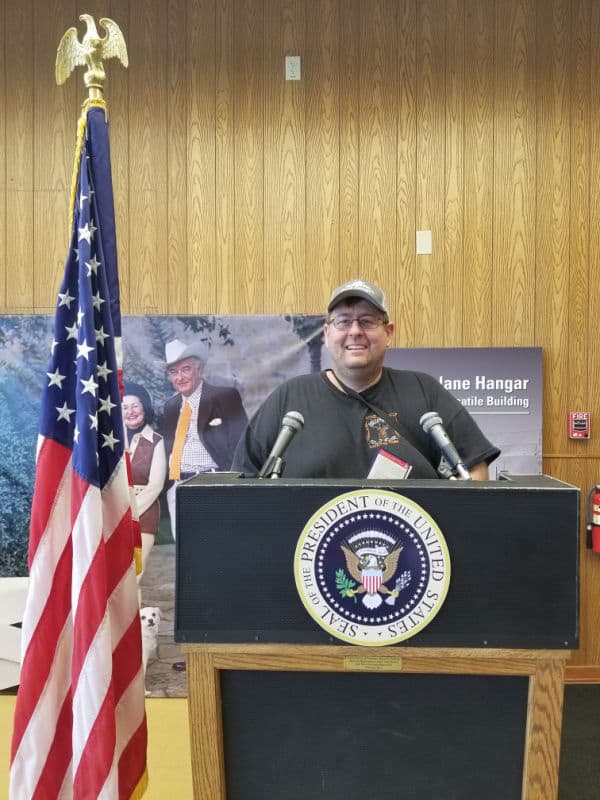
Getting to Lyndon B. Johnson National Historical Park
Closest Airports
- Gillespie County Airport
- San Antonio International Airport (SAT)
- Austin International Airport
Driving Directions
From Austin, take Highway 290 westbound. At the signal light in Johnson City, turn left (still on 290), towards Fredericksburg. Go three blocks and turn left on Avenue F. Go two blocks and turn right onto Ladybird Lane. The parking lot and visitor center are on the left.
From San Antonio, take Highway 281 northbound until it joins Highway 290 at the signal light in Johnson City. Turn left towards Fredericksburg. Go three blocks and turn left on Avenue F. Go two blocks and turn right onto Ladybird Lane. The parking lot and visitor center are on the left.
From Fredericksburg, take Highway 290 eastbound to Johnson City. After passing the traffic light at Nugent Street in Johnson City, go two blocks and turn right onto Avenue F. Go two blocks and turn right onto Ladybird Lane. The parking lot and visitor center are on the left. Note: You will pass the LBJ Ranch District on your way to Johnson City -- see next direction.
To the LBJ Ranch and LBJ State Park and Historic Site:
From Park Headquarters, take Highway 290 fourteen miles westbound to the LBJ State Historical Park.
From Fredericksburg, take Highway 290 sixteen miles eastbound to the LBJ State Historical Park.
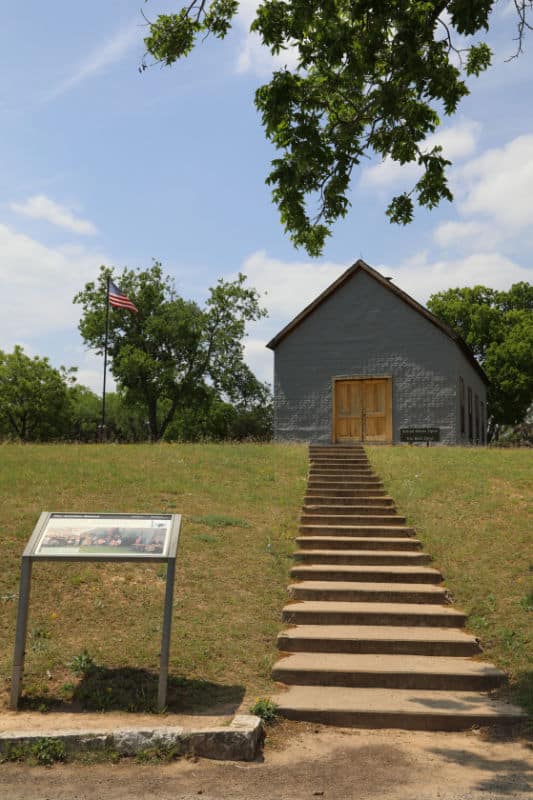
Best time to visit Lyndon B. Johnson National Historical Park
The best time to visit is late spring or fall. The summers are warm and muggy.
Weather and Seasons
Johnson City, Texas experiences hot and muggy summers with short cold winters.
The hottest weather is from June 1st to September 18th when the average daily temperature is above 88 degrees.
The coldest weather is from November 26th to February 22nd when the average daily temperature is below 67 degrees.
January is the coldest month of the year with an average low of 40 degrees and a high of 61 degrees.
May receives the most rain with an average rainfall of 3.7 inches.
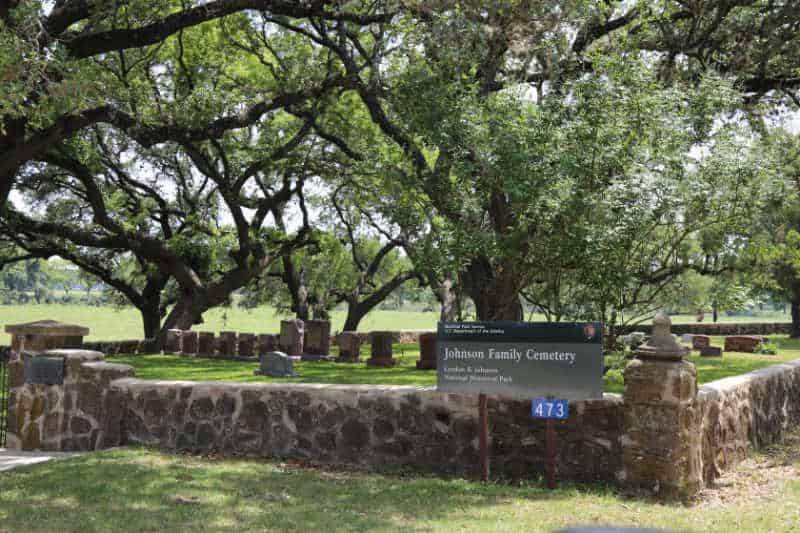
Best Things to do in Lyndon B. Johnson National Historical Park
We suggest planning at least half a day for visiting the park possibly longer to explore both sections and the state park.
Auto Tour around the LBJ Ranch
The auto tour is enroute to the Texas White House visitor center. Along the route, there are interpretive panels discussing the ranch and the cattle. Keep an eye out for great bird watching.
Make sure to Obtain a free driving permit at the LBJ State Park and Historic Site Visitor Center in Stonewall, Texas. You will also receive a map indicating the tour route.
The address for the LBJ State Park and Historic Site Visitor Center is:
199 State Park Road 52
Stonewall, TX 78671
Tour the Texas White House
As of August 2, 2018, the tours of the Texas White House are not being conducted.
The park service found structural issues within the house and want to make sure it is safe to bring visitors into the house.
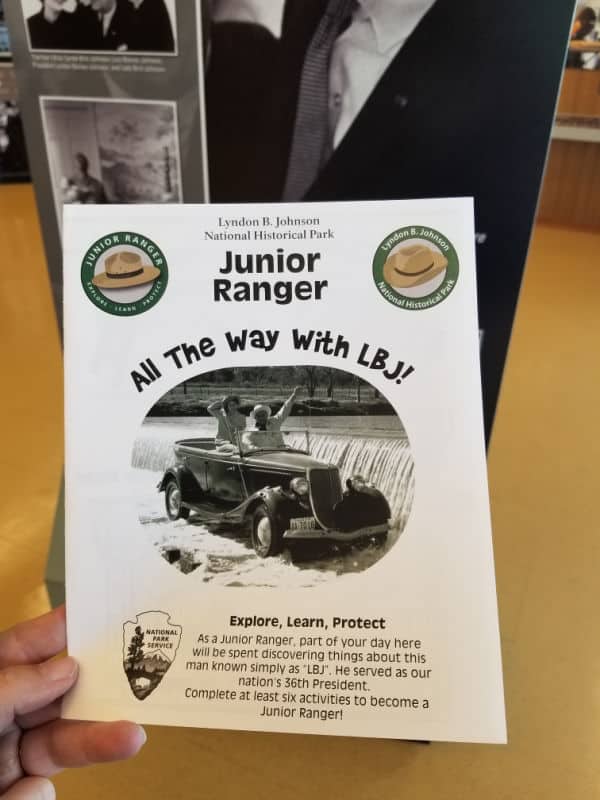
Junior Ranger Program
The Junior Ranger Program can be picked up at the Texas White House visitor center. The majority of the program can be done from this visitor center.
The book is great for learning more about the park and exploring new areas. I would suggest between 30 minutes to an hour depending on the age of the person completing the program.
Boyhood Home
This home is where President Johnson live from the age of 5 until his high school graduation in 1924.
As staffing permits, tours take place Wednesday through Sunday and begin on the hour starting at:
- 10:00 am
- 11:00 am
- 1:00 pm
- 2:00 pm
- 3:00 pm
Please note, there is no tour during the 12:00 noon hour. Tours are not be available Monday and Tuesday.
Stop by the visitor center or call (830) 868-7128 ext. 244 for updated program information.
Johnson Settlement
This settlement is where LBJ's Grandfather and Great Uncle established a cattle droving headquarters in the 1860s.
Still standing is their log cabin, barns, cooler house, and windmill still stand.
There is also an exhibit that focuses on cattle business, and settlement history.
To reach the Johnson Settlement it is a self guided walk from the visitor center along the nature trail. The trail is less than a mile long.
Bird Watching
We saw so many epic birds while enjoying the auto tour.
Camera Gear we use
We are big fans of using great camera gear to get amazing photos while traveling.
Canon R5 - We recently upgraded to the R5 after using a Mark 5 for years. We are loving the camera shutter speed and quality of images.
Canon 100 - 500mm - We use the Canon 100-500 for wildlife photography.
Camera Rain Cover - A rain cover will help protect your camera during rain showers but also when photographing waterfalls.
Camera Cleaning Kit - Cameras can get dirty, beat up, and dusty while in the parks. We like having a cleaning kit with us so we can do on the spot touch ups.
Extra Camera Batteries - We suggest always having one or two extra camera batteries with you. There is nothing worse than going to take a shot and the battery dies.
Extra Memory Cards - We use Extreme PRO SanDisk cards
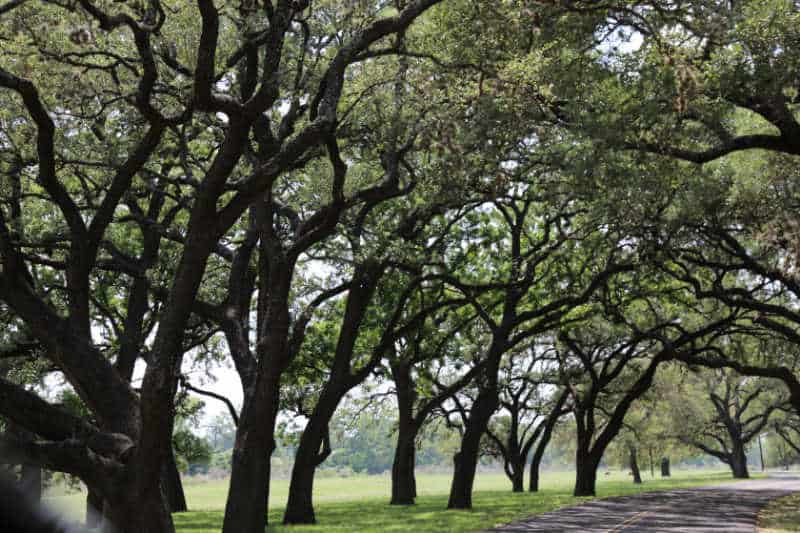
Hiking in Lyndon B. Johnson National Historical Park
Always carry the 10 essentials for outdoor survival when exploring.
There is a self-guided circular trail from the visitor center to the Johnson Settlement. The trail is a little less than a mile long.
How to beat the crowds in Lyndon B. Johnson National Historical Park?
We did not experience any crowds during our visit. There is a lot to explore so it is easy to move around any crowds you may run into.
Make sure to plan enough time to get on a tour in case they are busy.
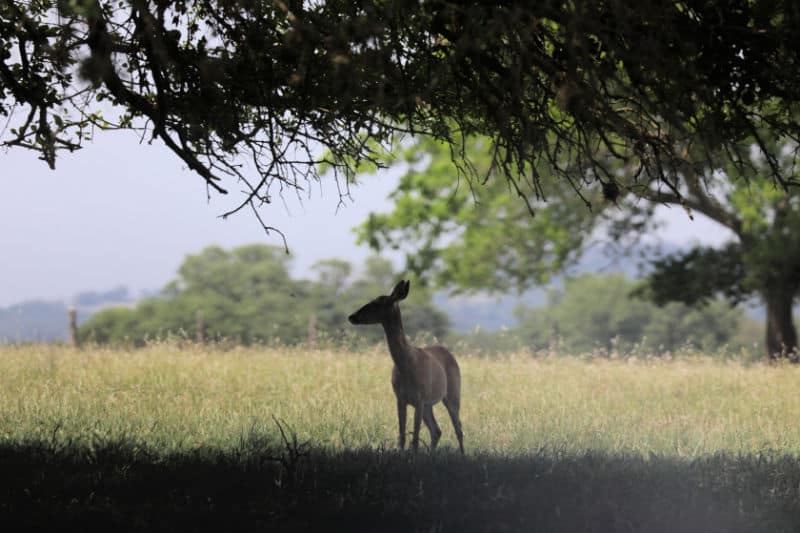
Where to stay when visiting Lyndon B. Johnson National Historical Park
There are no National Park Lodges within the park.
Camping
There are no National Park Campgrounds within the park.
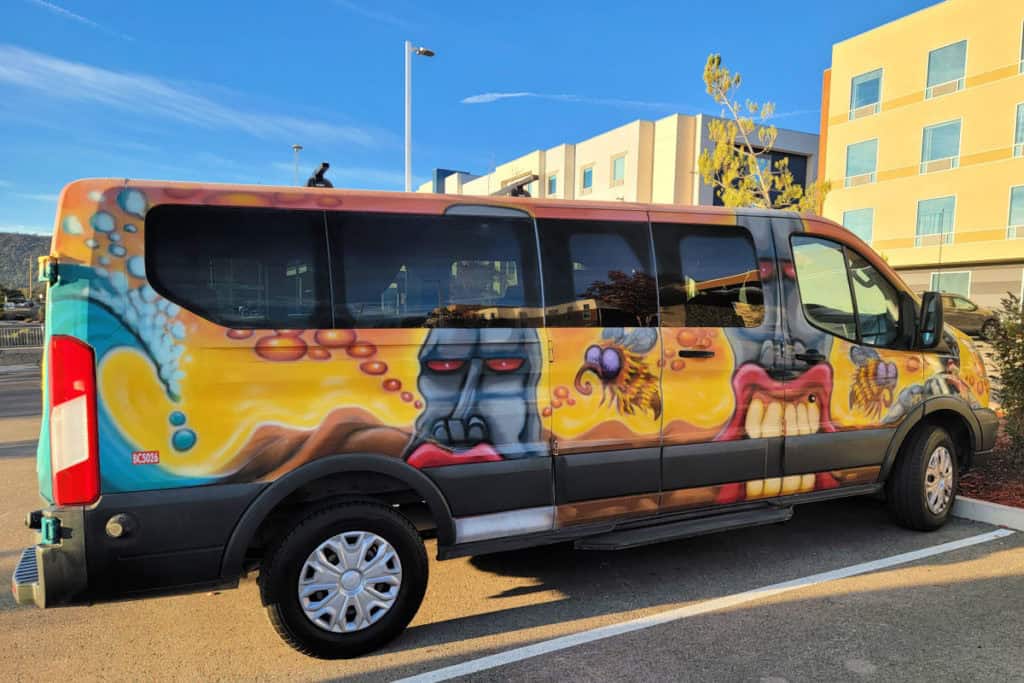
For a fun adventure check out Escape Campervans. These campervans have built in beds, kitchen area with refrigerators, and more. You can have them fully set up with kitchen supplies, bedding, and other fun extras. They are painted with epic designs you can't miss!
Escape Campervans has offices in Vancouver, Seattle, Portland, San Francisco, Las Vegas, Los Angeles, Phoenix, Salt Lake City, Denver, New York, and Orlando
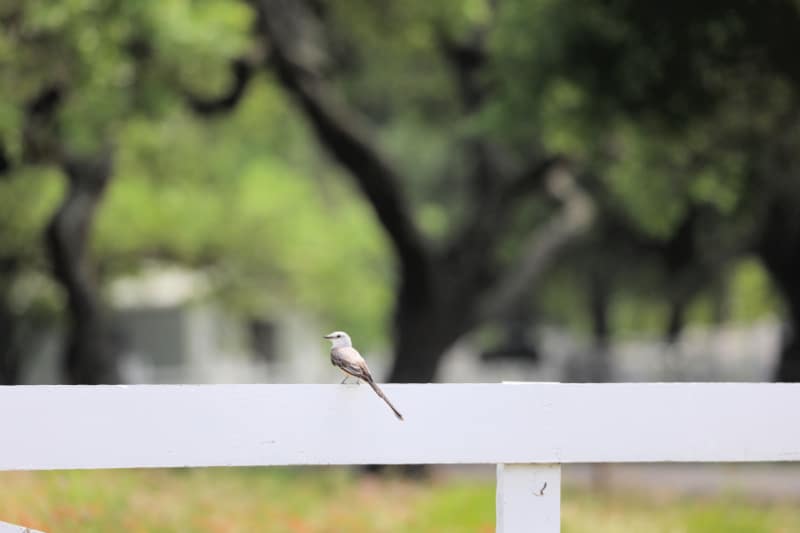
Additional Resources
Learn more about the park with this book about Lyndon B. Johnson National Historical Park
Lyndon B Johnson - Portrait of a President
The Path to Power - The years of Lyndon Johnson
The Triumph and Tragedy of Lyndon Johnson - The White House Years
Parks Near Lyndon B. Johnson National Historical Park
Amistad National Recreation Area - 192 miles
Waco Mammoth National Monument - 158 miles
Fort Davis National Historic Site - 364 miles
Alibates Flint Quarries National Monument - 483 miles
Lake Meredith National Recreation Area - 494 miles
San Antonio Missions National Historical Park - 70 miles
Padre Island National Seashore - 232 miles
Check out all of the National Parks in Texas along with neighboring National Parks in Arkansas, National Parks in Louisiana, New Mexico National Parks, and Oklahoma National Parks
Make sure to follow Park Ranger John on Facebook, Instagram, Pinterest, and TikTok

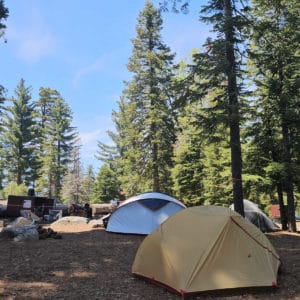
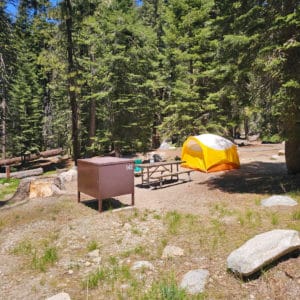
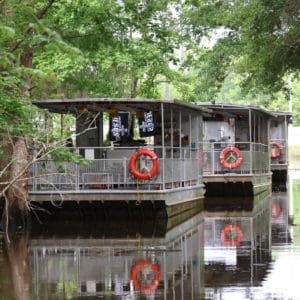
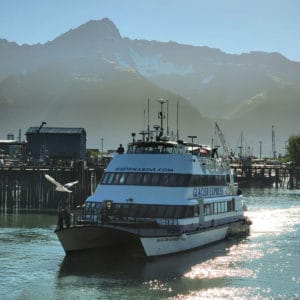
Leave a Reply